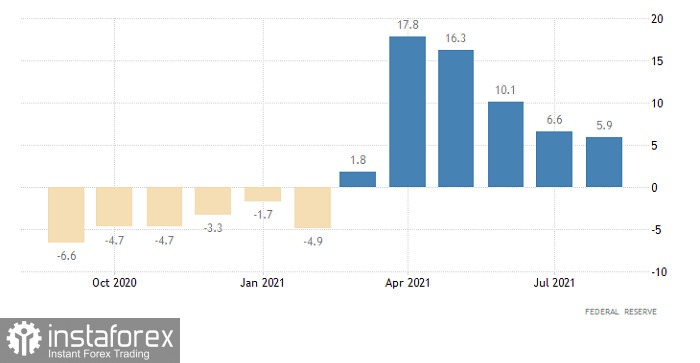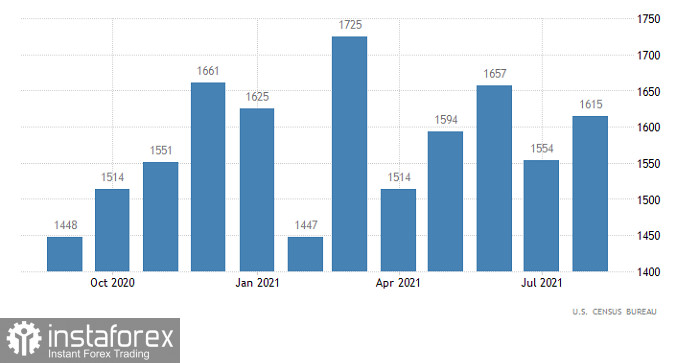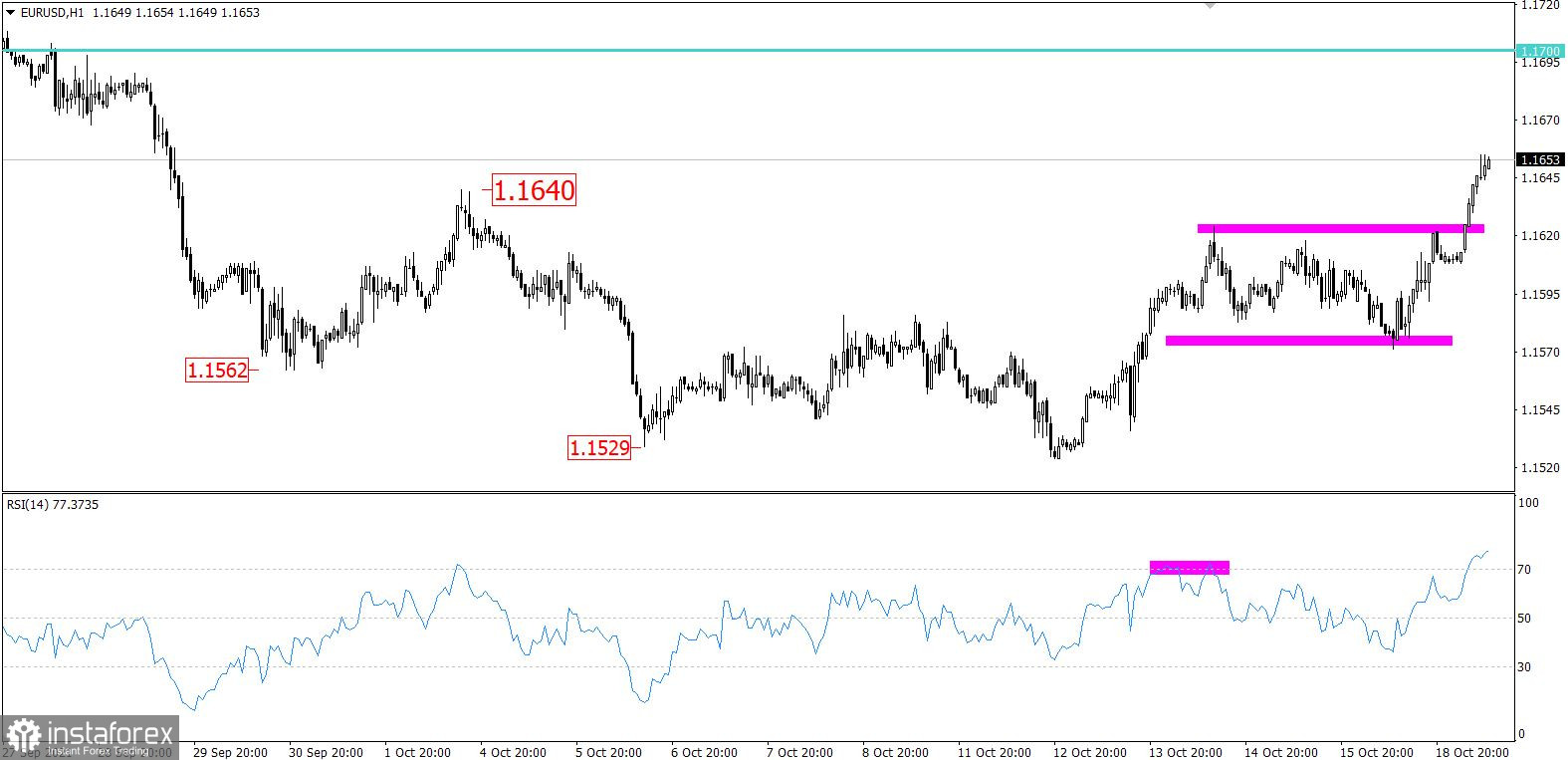The single European currency has been rising steadily since the beginning of the month. However, at first it was a common rebound after a massive collapse. Then, its growth was favored by speculative agitation, aggravated by fake news. Now, the US macroeconomic statistics are to blame. The growth rate of industrial production in the United States slowed down from 5.7% to 4.6%. Moreover, the previous results were revised lower from 5.9%. Consequently, the extent of the decline in industrial production was much more impressive than expected. However, a slowdown from 5.9% to 5.7% was forecasted. While the growth is still observed year on year, monthly statistics are much worse. Besides, instead of growth of 0.3%, the market demonstrated a decline of 1.3%. It is not surprising that the correction has been prolonged.
Industrial Production (United States):

Today, US statistics will continue to weaken the dollar as new residential construction is expected to be down 0.9%. Moreover, the number of building permits should decrease by 1.8%, which means that the housing will keep falling. So far, US statistics have not been very positive. Besides, it is the main reason for the dollar's weakening .
New residential construction (United States):

After a short break, the EUR/USD currency pair resumed its upward movement and renewed the local high of 1.1640 on October 4.
In the hourly time frame, the RSI signaled a high degree of overbought euro. The indicator jumped to the level of 77.61. This tendency has not been observed for a long time.
A downtrend dominates on the daily chart. Besides, there was a correction in its structure from October 13 to 19.
Expectations and prospects:
The rapid upward move during the Asian session indicates a high speculative interest in long positions. This may result in a full-blown corrective move. The price area of 1.1680/1.1700 is considered as the next resistance level.
Complex indicator analysis gives a buy signal based on the short-term and intraday periods due to the price movement within the local maximum of the correctional move.






















